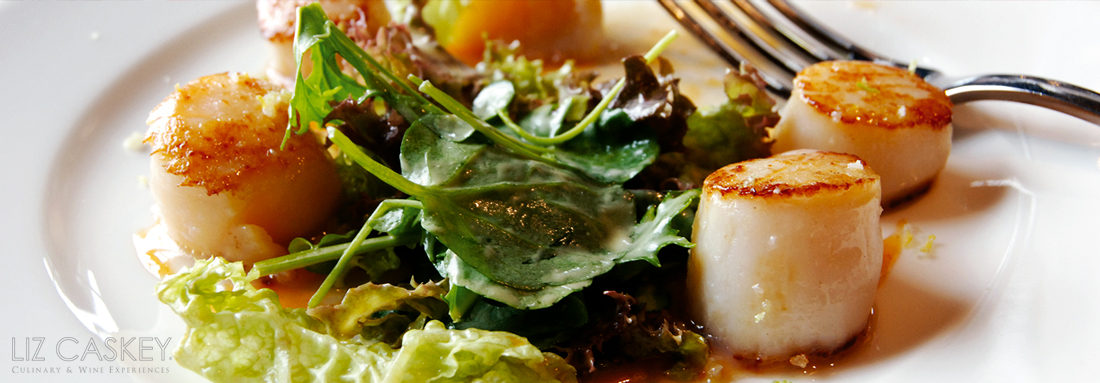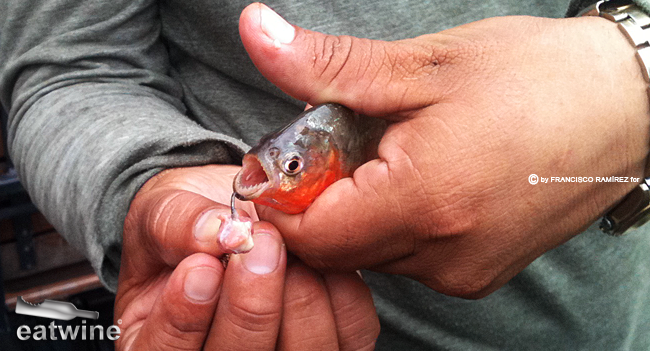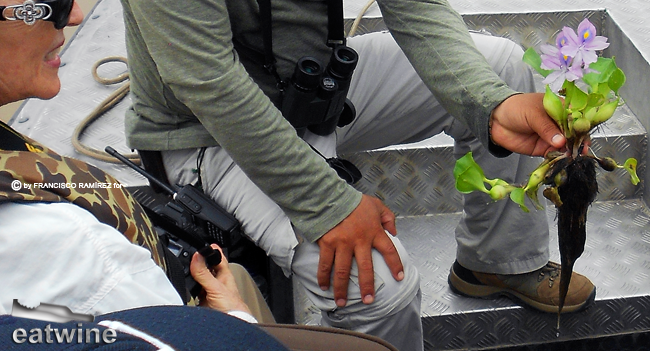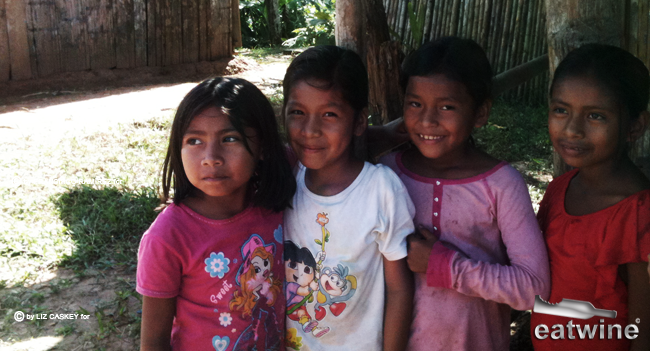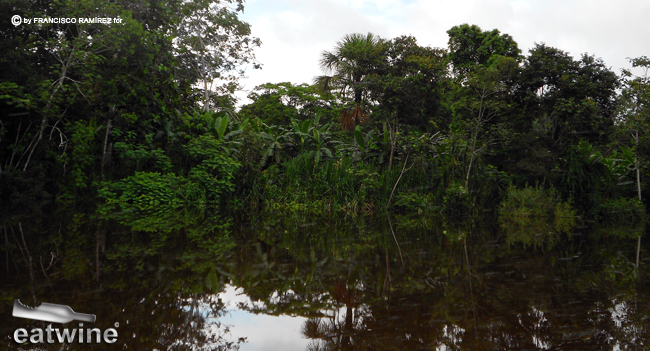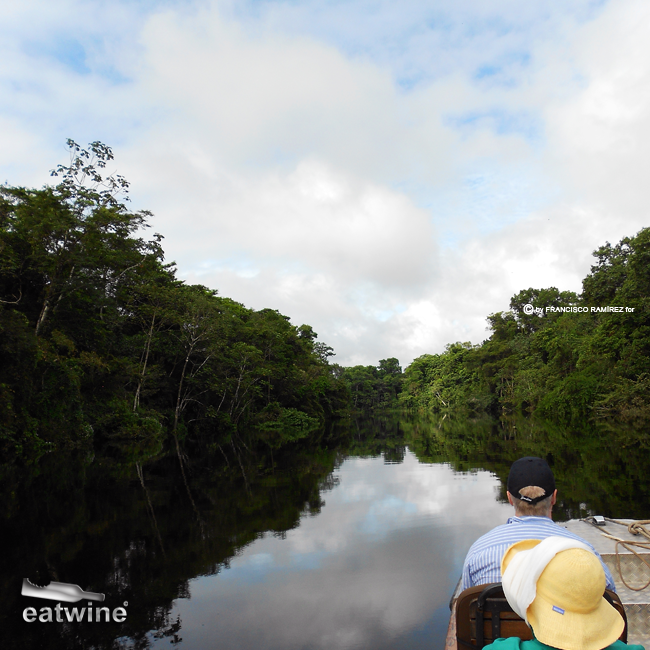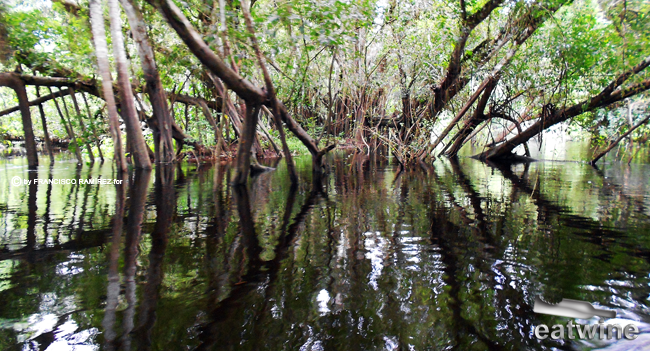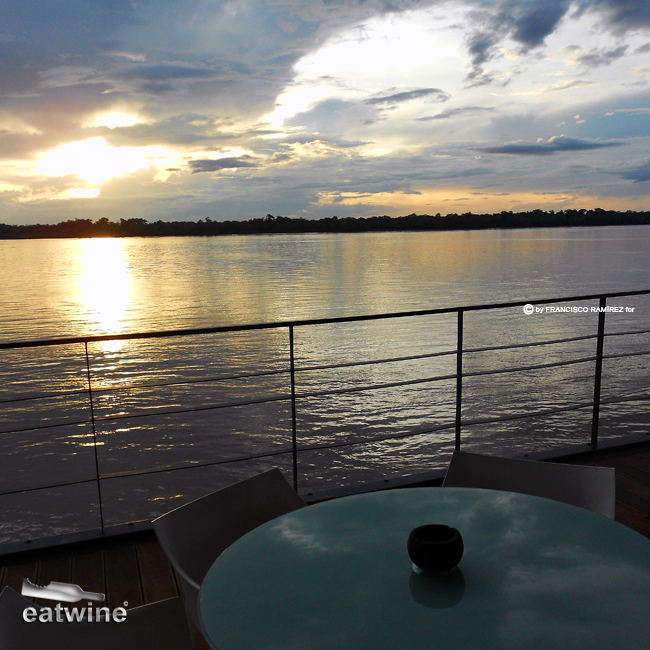The air is heavy, humid and so full of oxygen it feels weighted. In the distance, bolts of lighting make contact with earth and a stormy breeze ruffles the palms. There’s a scent of grilled meat perfuming the air. Next to the river, dozens of street food vendors prepare anticuchos, marinated ox heart skewers, and juanes; “purses” of rice and chicken wrapped in banana leaves and steamed. Thousands of mototaxis, similar to rickshaws in Asia, barrel through the narrow streets. We’ve just landed in Iquitos, a city of more than 500,000 people in the heart of the Peruvian Amazon. Accessible only by air or boat, this place is surrounded by jungle and water. Iquitos was founded with the rubber boom, an era reflected in many facades of the weathered buildings with rusted wrought iron balconies and Portuguese tiles. We are here, on a quick romp, before embarking on our water safari deep into the Amazon with Aqua Expeditions for the next few days.
Our exploration takes us to the birth place of the two rivers that form the mighty Amazon: the Ucayali and the Marañon. These same rivers also are the borders of the Pacaya-Samiria Reserve, remote and very difficult to access. After navigating all night, we wake to a local-style breakfast with wild tomato juice, silky fresh papaya, homemade steamed tamales, and chorizo, spicy Amazonian sausage. The excursions start early and later in the afternoon, the best time frame to appreciate the abundant wild life like howler monkeys, pink dolphins, sloths, caimans, anacondas and dozens of birds like tucans, macaus, and king fishers.
On the skiffs, we frequently pass small villages with thatched roofs where the children run to wave and greet us. Here a car, or bike, is worthless–a canoe, hopefully with a motor, is king. We navigate small rivers, lagoons, and tributaries that almost appear to be floating prairies as they are covered by dense vegetation. This overgrowth of “Amazonian lettuce”, as the guides call it, is a direct effect of the few Manatees that now live in these Rivers, the basic diet of these lovely, gentle creatures. We stop along one side of a lagoon among floating bushes to fish for piranhas-with raw meat as bait. These little carnivores look innocent given their smallish size, but their sharp teeth and speed show otherwise. Definitely the Amazon is not suited for swimming…
The rain begins, each second the drops become bigger and stronger. We take refuge under the ponchos until we arrive at the mother ship. As we step on board, tall glasses await us with tangy neon pink camu camu juice, which contains 10 times more Vitamin C than orange juice. It downpours, and we start navigating again. After lunch, and a couple beers, I nod off to a siesta in the blessed A/C. That’s life on board Aqua. Rest, read, drink, chat, and take in the spectacular views of the river between excursions. En route, we pass family canoes filled with goods heading towards the market in Iquitos. Other barges chug slowly along towards Manaus in Brazil.
The rain stops and we head out on an evening navegation on a black water tributary. It feels as if we glide over a mirror. My eyes are unable to distinguish between the sky and water. The pungent smell of sulphur permeates the air, caused by the constant decomposition of the vegetation. Everything in the jungle is an unending cycle of death and rebirth. We stop to take a break in a lagoon at sunset. The skiffs’ motors are turned off so we can appreciate the “symphony” of the jungle. Undescribable stillness, yet surrounded by a place that is so alive. The barman, Aldo, serves us a mimosa topped with a Marischino cherry and we munch on native nuts like sacha inti and macondo. We celebrate until nightfall and quickly the jungle becomes pitch black. What the hell have we gotten ourselves into?
Our guide, Ricardo, takes to the bow of the skiff with a spotlight in hand. We begin to navigate the lake and tributary searching for “night time creatures”. Right…and we’ll live to tell about this? Bats fly about above our heads, the crickets and jungle animals sing their hearts out. All of a sudden, we see a pair of red eyes. A caiman (type of alligator). Ricardo hunts, with his bare hands, three caimans (all progressively larger) as if they were a household pet. He holds them in the boat, expertly, so we can see, and touch them, up close. Incredible. We continue to navigate in darkness. I feel like we are in a real life Indian Jones movie. Exhiliarating.
That night on board, like every night, we savor the local Amazonian abundance of local river fish, herbs, fruits, and fresh products virtually unknown outside of the region. The executive chef, Pedro Miguel Schiaffino (owner of Malabar in Lima) has spent much time in the region understanding the products and incorporating them into the nightly tasting menus served on the boat. Tonight, we dig into a fresh heart of palm salad, called chonta, that came cut like thin fettucine. We devour pijuayos, palm fruit, with homemade mayo accented with cocona, an acidic fruit that marries well with creamy sauces. The main course always comes split in two petit courses-one fish, the other meat. Yummy, I love paiche, a firm white fish seared with a reduction of moqueca peruana, a savory earthy sauce. After, a near perfect cut of short ribs, braised for hours with a molasses from the Amazon called masato. A palate cleansers called araza (guaba) refreshes our palate before dessert, which is a sinful crème brulee made with fresh coconut milk and wild jungle berries. Even I cannot say no to that!
Our last day on board, we arrive at the conjuncture where the Amazon is born. Today, we finally walk on tierra firme. In the summer, the rain from the Andes and jungle is “high water” season. The borders of the river, and towns, are flooded. During dry season in winter, the waters recede as does the width of the river. We take a walk in the dense jungle to marvel at the abundance of life. In every square foot, I am fascinated by the sheer diversity of plants, trees, insects, birds. The sun feels far away in the shade, but it also creates the effect of a Turkish steam bath. And yes, there are plenty of mosquitoes. Fortunately, there’s no malaria in the Peruvian Amazon and I am covered in DEET from head-to-toe.
We visit one of the larger villages, San Francisco, where we meet charming local kids. We are invited into a home to understand their daily life. The señoras are cooking up the morning’s catch along with fresh vegetables from the yucca, papaya, and banana fields. In these Amazonian towns, Aqua provides basic medical attention to townspeople with their on-board paramedic, and encourages passengers to bring notepads, crayons, and pencils to promote education with the children. Next to the river, the children begin to dance “La Anaconda”, shaking to the rhythm. So cute, so happy, sometimes I think these children are truly fortunate to have such a simple childhood in direct contact with nature.
What has seemed to be a movie, that is, our cruise on the Amazon, is about to end. I have mixed feelings as we could have easily continued for several more days. We disembark in Nauta, 90 kilometers south of Iquitos, and the only paved road in the entire state of Loreto with vehicular traffic. Suddenly, there’s a cell signal. Internet. Civilization. At the Iquitos airport, we’re informed of a five-hour delay to Lima due to fog in the capital. Reality comes crashing down. We dream of our life on board Aqua. What to do in this terminal with no A/C? Snack on salty banana chips, drink cold chelas, beer, and plan our return.
Contact us to book your trip to the Peruvian Amazon. For more information e-mail us at info@lizcaskey.com or call (904) 687 0340.
